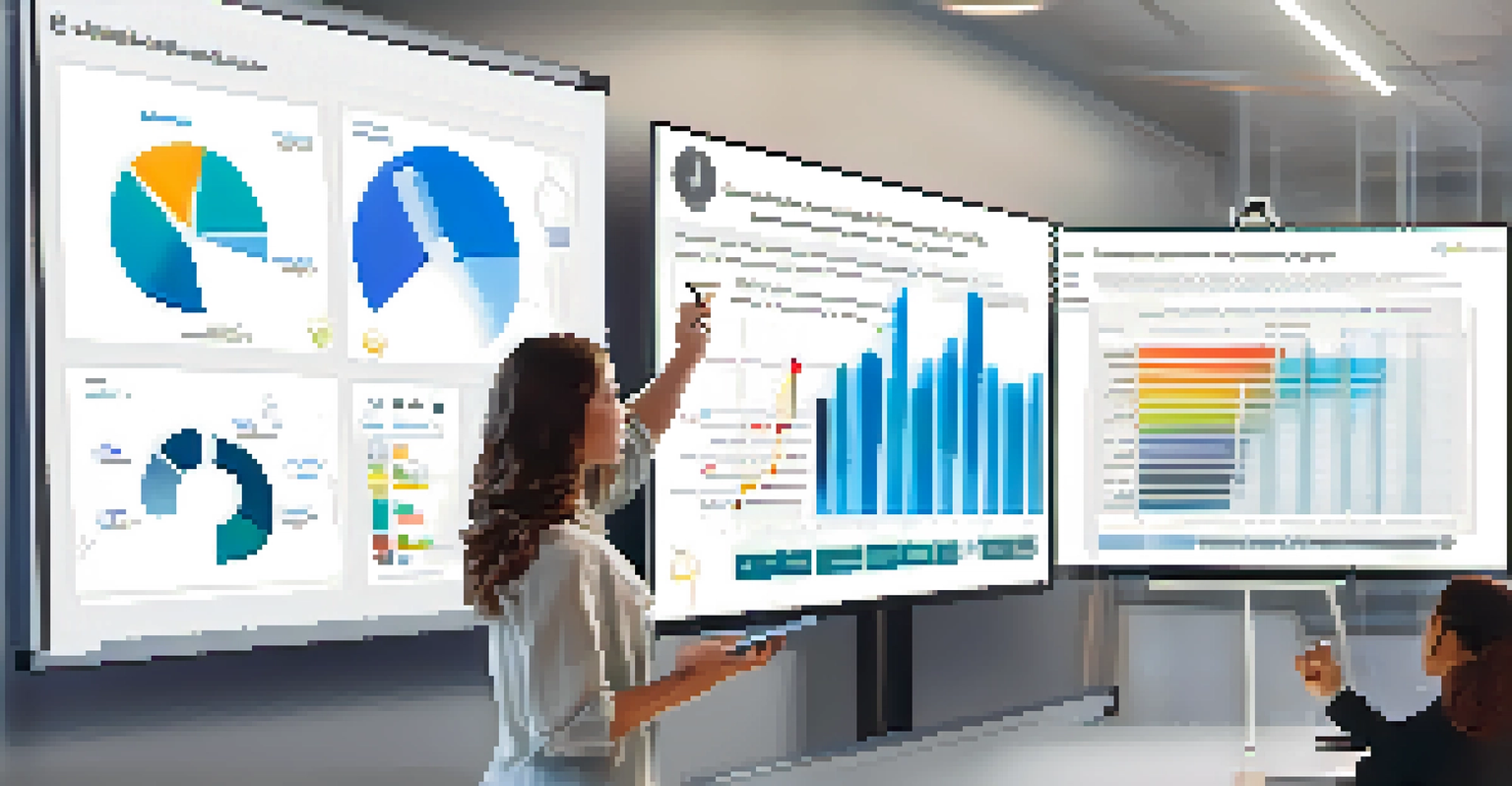How to Measure Learner Engagement in Your LMS

Understanding Learner Engagement in Your LMS
Learner engagement refers to how actively students participate in their learning. In a Learning Management System (LMS), this can manifest through interactions with course materials, participation in discussions, or completing assignments. Understanding this engagement is crucial; it helps identify students who may be struggling and informs improvements to your content.
Engagement is the key to unlocking a learner's potential.
Think of engagement as the heartbeat of your LMS. Just like a doctor monitors vital signs to assess health, educators need to track engagement metrics to gauge student success. High engagement often correlates with better learning outcomes, making it a key focus for any educational program.
By fostering an environment that promotes engagement, you not only enhance the learning experience but also boost retention rates. This leads to a more successful educational journey for both learners and instructors.
Key Metrics to Track Learner Engagement
To measure learner engagement effectively, focus on specific metrics such as course completion rates, time spent on the platform, and interaction frequency. Each of these metrics provides valuable insights into how learners are engaging with the material. For instance, a high course completion rate indicates that students find the content relevant and engaging.

Another important metric is the time learners spend on each module. If they’re spending significant time on challenging concepts, it might suggest they’re deeply engaged, or conversely, that they need additional support. Understanding these nuances can help tailor the learning experience to better meet student needs.
Engagement Metrics Matter
Tracking metrics like course completion rates and time spent on modules helps educators understand learner engagement and tailor their approach.
Additionally, consider tracking discussion participation and peer interactions. Engaging with classmates not only enriches the learning experience but also fosters a sense of community, which is vital for motivation.
Utilizing Analytics Tools for Engagement Insights
Most LMS platforms come equipped with analytics tools that allow you to track and visualize learner engagement data. These tools can provide real-time insights into how students are interacting with your courses. By utilizing these analytics, you can identify patterns and trends that inform your teaching strategies.
Feedback is the breakfast of champions.
For example, if data shows that students are frequently dropping off at a particular module, it might be time to reassess the content or the delivery method. This proactive approach ensures that you can address issues before they become widespread problems, enhancing the overall learning experience.
Moreover, regular analysis of engagement data can help in setting benchmarks for success. You can compare current data against past performance, allowing you to celebrate improvements and identify areas needing attention.
Creating Engaging Content to Boost Participation
Content is king, especially when it comes to learner engagement. By creating interactive and relevant materials, you can significantly enhance participation. Incorporate multimedia elements such as videos, quizzes, and discussion forums to make the learning experience more dynamic and engaging.
For instance, instead of a traditional lecture format, consider including case studies or real-world applications that resonate with learners. This approach not only captivates their interest but also promotes deeper understanding and retention of the material.
Interactive Content Boosts Learning
Creating engaging and interactive content, such as multimedia elements and real-world applications, significantly enhances student participation.
Additionally, providing opportunities for learners to contribute their insights and experiences can foster a more engaging environment. When students feel their voices matter, they’re more likely to participate actively in their learning journey.
Encouraging Peer Interaction and Collaboration
One effective way to enhance learner engagement is by promoting peer interaction and collaboration. Group projects, discussion boards, and peer reviews can create a sense of community among learners. This social aspect of learning not only makes the experience more enjoyable but also encourages deeper connections with the material.
Think of it this way: learning in isolation can sometimes feel daunting. When students collaborate, they not only share knowledge but also motivate each other. This camaraderie can lead to higher engagement levels, as students are more likely to stay committed when they feel part of a team.
Moreover, collaborative tasks can help develop critical soft skills such as communication and teamwork, which are essential in both academic and professional settings. By fostering collaboration, you equip learners with skills that extend beyond the classroom.
Providing Timely Feedback to Enhance Engagement
Feedback is a powerful tool in education, and providing timely, constructive feedback can significantly boost learner engagement. When students receive feedback shortly after submitting assignments, they understand their progress and areas needing improvement. This immediate response encourages them to stay engaged with the material.
For example, consider using automated feedback tools that allow you to give instant responses on quizzes and assignments. This not only saves you time but also keeps learners motivated to improve, as they can see their progress in real-time.
Feedback Fuels Engagement
Providing timely and constructive feedback encourages learners to stay engaged and motivated by helping them understand their progress.
Additionally, creating opportunities for peer feedback can foster a culture of collaboration and support. When students engage in providing feedback to one another, they deepen their understanding of the content and learn to appreciate diverse perspectives.
Adjusting Strategies Based on Engagement Data
Once you've gathered data on learner engagement, it's essential to use that information to inform your teaching strategies. Adjusting course materials and instructional methods based on engagement metrics can lead to more effective learning experiences. For instance, if data indicates low participation in certain activities, consider revising or replacing them.
Engagement data can also guide you in personalizing learning experiences. If certain students are consistently struggling, targeted interventions can help them catch up and stay engaged. This individualized approach not only supports struggling learners but also enhances overall course satisfaction.

Remember, the goal is to create a responsive learning environment. By continually adapting your strategies based on data, you ensure that your LMS remains an engaging and effective platform for all learners.